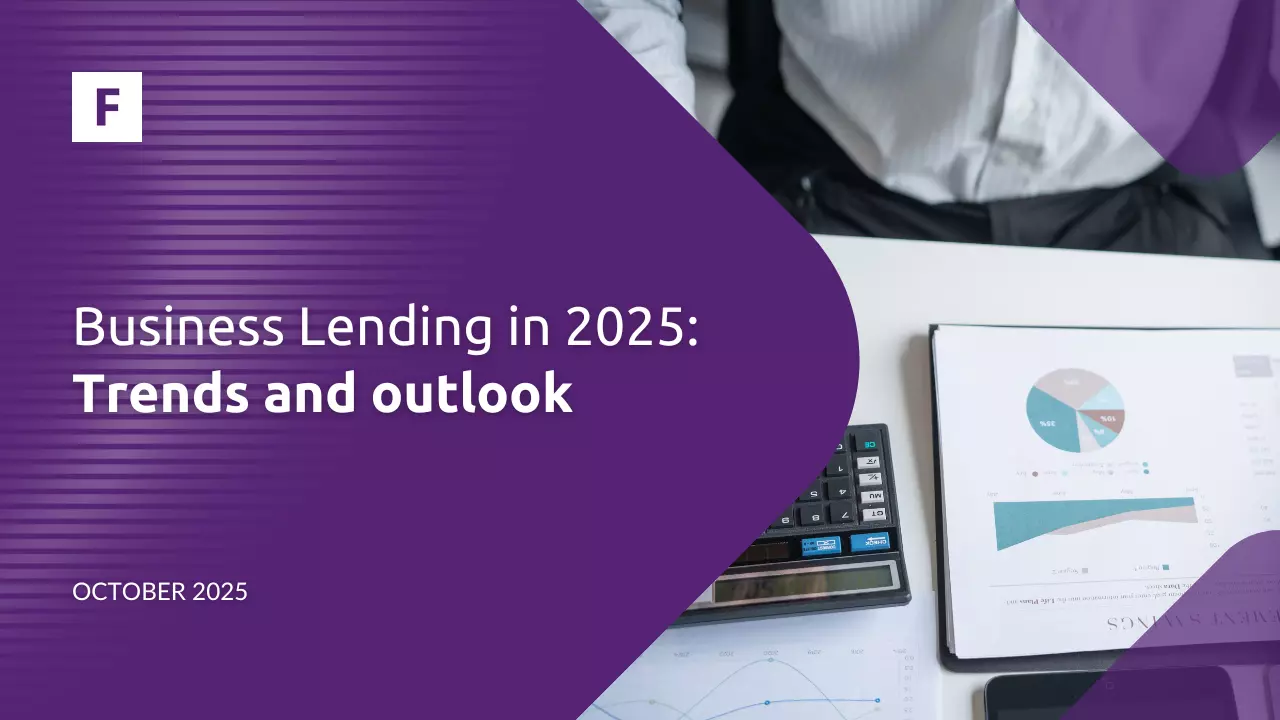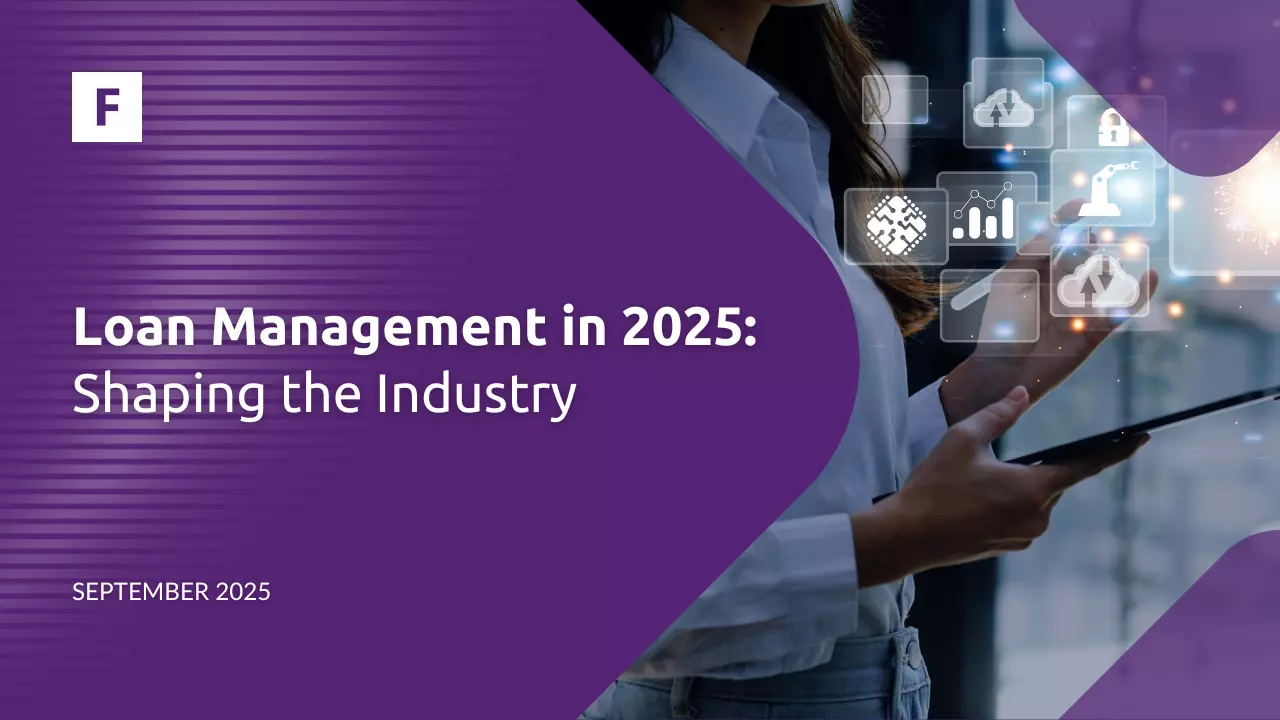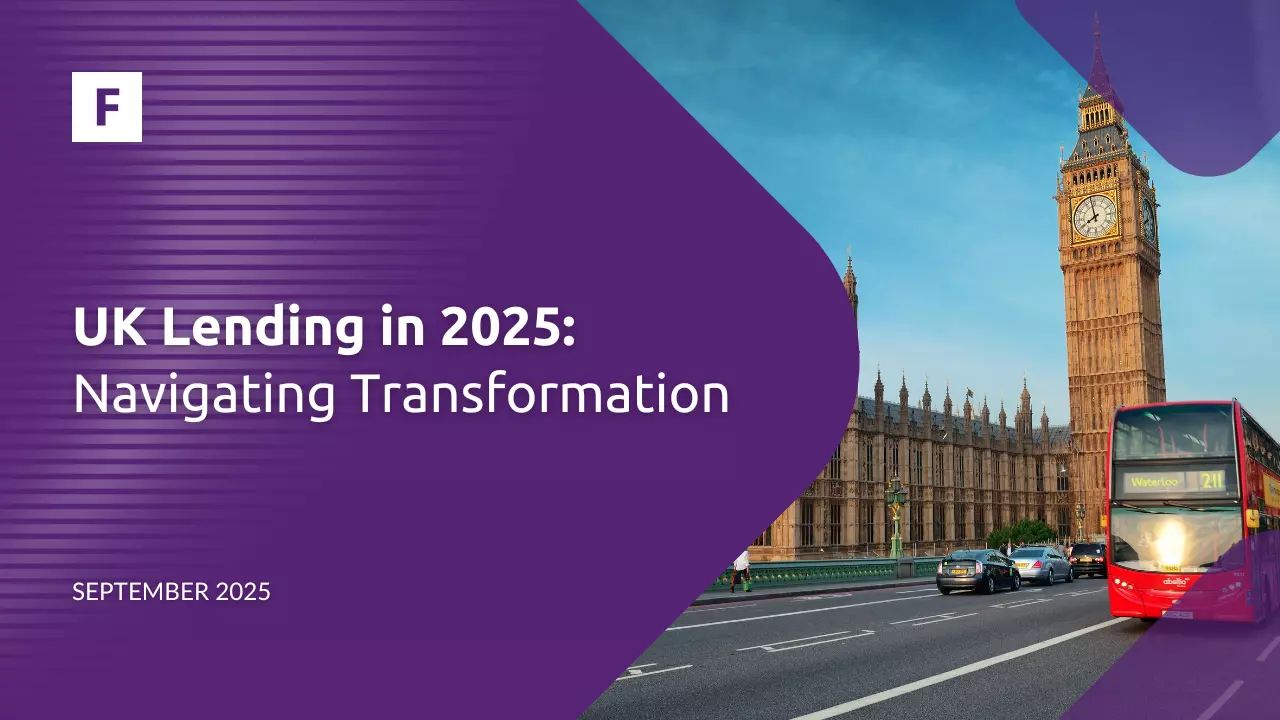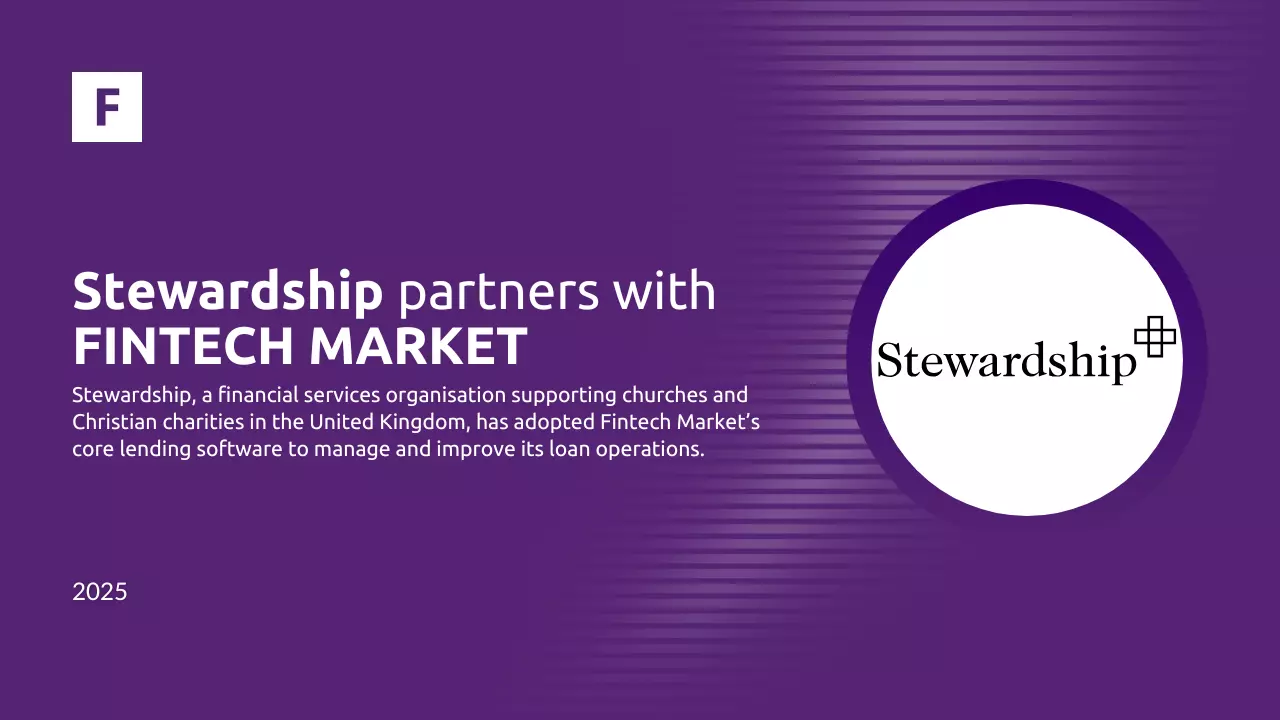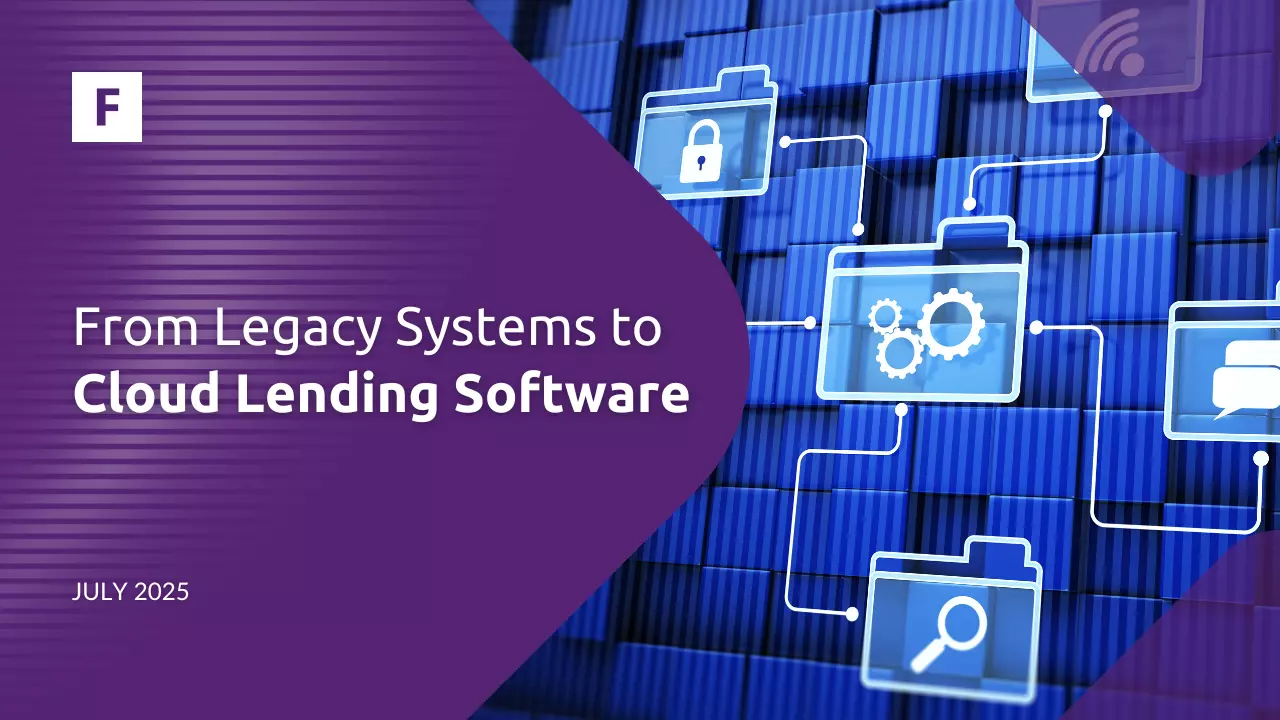As 2025 heads into its final stretch, clear lending trends have emerged across global markets. From U.S. banks regaining confidence to fintech platforms reshaping small-business lending, the financial ecosystem is in the midst of rapid transformation.
These are the main key takeaways from this article:
Uneven global recovery
Corporate lending rebounds
Fintech drives digital lending
Green finance and AI shape the future
The State of Lending in 2025
Equity research analysts have raised their 2025 loan growth forecasts for central U.S. banks following stronger-than-expected second-quarter results. The median full-year growth estimate for the 20 largest publicly traded banks rose to 4.1%, reversing earlier downward revisions tied to market uncertainty.
Much of the momentum came from commercial and industrial lending, with strong performances from JPMorgan Chase, Truist Financial, and Bank of America. Huntington Bancshares is expected to lead second-half growth, boosted by its Veritex acquisition. While analysts anticipate a slowdown in the latter half of 2025 due to softer loan demand, the overall outlook points to renewed confidence in the U.S. banking sector's lending recovery.
Global Situation
The global credit landscape is showing signs of strain in 2025 as the Credit Cycle Indicator (CCI) turns downward after two years of growth, signaling a possible credit correction. Most regions are experiencing negative momentum, except Europe, where conditions are stagnant.
Despite ongoing debt issuance and relative stability among rated entities, geopolitical and policy uncertainties are weighing on confidence. Household financing has shown slight improvement but remains well below long-term averages, while corporate lending is losing momentum as businesses delay investments and focus on strengthening balance sheets.
China
China's CCI shows that a credit correction is underway in 2025, driven by a prolonged property sector slump and ongoing tariff uncertainty. Falling home prices are eroding household wealth, while a weaker economic outlook and rising unemployment are curbing consumer spending.
On the corporate side, companies are increasing borrowing to manage cash flow amid soft demand, shrinking margins, and manufacturing relocation. Persistent overproduction and price competition are fueling deflationary pressures, and although policy efforts aim to stabilize profitability, their impact is expected to unfold gradually.
Japan
Japan's CCI continues to decline in 2025 as both corporate and household debt fall 2% and 1% year over year, respectively. While nominal GDP grew 5%, high inflation and sluggish wage growth are pressuring household finances, prompting consumers to cut back on discretionary spending. Trade tensions with the U.S. have eased, but a strong yen is hurting export competitiveness, especially in the auto and capital goods sectors.
At the same time, Japanese companies are increasingly raising capital for overseas investments, supported by narrowing interest rate gaps and limited domestic bond market options, as the Bank of Japan prepares to raise rates once economic uncertainty subsides.
Eurozone
In the eurozone, the CCI has leveled off in early 2025, reflecting a fragile balance between improving fundamentals and persistent geopolitical uncertainty. While household conditions are strengthening---supported by rising property and equity prices that boost borrowing capacity---the corporate sector shows mixed signals.
Deleveraging continues in Spain and the U.K., while debt levels remain high in France and Germany. Despite signs that corporate balance sheet retrenchment has ended, weak consumer confidence and subdued investment appetite are holding back credit demand.
Industrial production remains below pre-2021 levels, suggesting that the region's credit recovery remains hesitant despite modest economic progress.
Corporate Lending
After a turbulent few years, the corporate lending market is regaining momentum, projected to grow at a 10.65% CAGR to reach USD 7.88 trillion by 2030. Easing economic pressures, rate adjustments, and renewed business activity are creating fresh opportunities in areas like digitization and infrastructure investment.
However, profitability remains a challenge for banks, even in a high-rate environment. The sector's flexibility --- offering custom lending terms --- is both a strength and a weakness, as it relies heavily on manual processes and an aging specialist workforce.
Attrition in U.S.-based loan operations has reached up to 70% since 2021, and underinvestment in technology has driven up operational costs.
Fintech Lending
In 2025, the global fintech lending market reached $590 billion, with digital lending now accounting for 63% of U.S. personal loan originations and more than half of small-business loans in developed regions sourced via fintech platforms.
This rapid growth reflects a fundamental shift in how individuals and businesses access credit, moving away from traditional, paper-heavy processes toward fast, tech-driven, and accessible solutions. Fintech platforms are enabling borrowers to secure funds with greater speed and convenience, reducing reliance on manual paperwork and lengthy approval cycles.
The sector is expanding globally, with Asia-Pacific holding over 21% of the digital lending market, North America and Europe showing strong adoption, and emerging regions like Latin America, the Middle East, and Africa experiencing rapid fintech growth.
By mid-2025, fintech-originated loans surpassed $500 billion in outstanding balances, demonstrating the increasing trust and reliance on alternative lending channels.
Consumer Lending
As digital lending continues its rapid growth in 2025, more than 60% of U.S. personal loan originations are now completed online.
At Fintech Market, we support this transformation with our Consumer Lending platform. By combining instant approvals, flexible repayment terms, and broader financial access, our technology helps lenders meet rising borrower expectations.
With integrated Decision Engine, our Consumer Lending product ensures fast, accurate risk assessments, reducing defaults while keeping the user experience seamless.
SME Lending
Small and medium-sized enterprises remain the backbone of global economies, yet many still face barriers to financing through traditional banks. In 2025, more than half of SME loans in developed markets are delivered through fintech platforms --- evidence of the shift toward more innovative, more efficient solutions.
Fintech Market's SME Lending platform is designed to close this gap with end-to-end lending software that functions as both a loan origination software and a complete loan management system.
With automated credit assessment, customizable repayment terms, and API-based data integrations, our platform empowers lenders to serve SMEs faster and more effectively. By leveraging credit decisioning software, institutions can approve business loans with confidence, supporting growth, working capital needs, and long-term resilience.
Credit Line
For both businesses and individuals, flexibility in financing is just as vital as access. Unlike rigid term loans, credit lines offer a revolving option that borrowers can draw on when needed.
Our Credit Line solution equips lenders with advanced lending software to manage this flexibility with complete control over limits, pricing, and repayment terms.
Purchase Financing
The rise of embedded finance and buy-now-pay-later (BNPL) models has redefined how both businesses and consumers approach credit in 2025. Borrowers increasingly expect financing to be built directly into the purchase experience, rather than relying on separate loan applications.
Purchase Financing Solution brings this innovation to life. With our loan origination software and credit decisioning software, financial institutions can integrate flexible credit options at the point of sale --- from retail checkouts to B2B transactions.
The platform supports flexible repayment schedules, instant approvals, and automated risk analysis. By combining digital lending with seamless customer experiences, we help lenders boost sales, improve customer loyalty, and capture growth in one of the fastest-expanding areas of modern credit.
Factoring
Unpaid invoices can lock up valuable working capital and create serious liquidity challenges, especially for SMEs navigating tighter credit conditions in 2025. Factoring --- turning receivables into immediate cash --- has become a vital financing tool, and fintech solutions are modernizing how it works.
Fintech Market's Factoring Software transforms this process with intelligent automation. Acting as a comprehensive loan management system, it enables lenders to reduce manual work, optimize portfolio management, and deliver faster access to liquidity.
By digitizing a traditionally manual, paper-heavy process, our lending software helps financial institutions unlock new revenue streams while supporting businesses with reliable, flexible cash flow solutions.
Green Lending
The global green finance market is surging, expected to reach USD 28.7 trillion by 2033 with a strong 21.25% annual growth rate. As governments worldwide push for climate action, financial institutions are playing a crucial role in funding the transition to a low-carbon economy.
Green financing is transforming how individuals and businesses adopt eco-friendly technologies by tackling one of the most significant barriers --- high upfront costs. Innovative lenders are introducing flexible, tailored financing solutions for projects like solar panels, energy storage, and sustainable infrastructure, allowing borrowers to spread costs over time.
This creates a win-win model: customers benefit from lower energy bills and long-term savings, while lenders gain a competitive edge by aligning with ESG principles and meeting the growing demand for sustainable finance.
As the green finance market expands, forward-thinking lenders have a significant opportunity to lead the sustainability movement, unlock long-term value, and help drive global economic and environmental progress.
AI in Fintech
In 2025 and beyond, AI is transforming the fintech landscape, enhancing how companies handle credit modeling, underwriting, fraud detection, payments, and customer service. By dynamically analyzing real-time data, AI improves credit decisioning, reduces default risk, and speeds up loan approvals, while human oversight remains essential for complex cases.
AI-powered chatbots now resolve routine customer inquiries in seconds, freeing human agents to handle nuanced issues, and fraud detection tools are identifying millions in suspicious activity weekly.
In payments, AI enables more innovative spend management, real-time transaction monitoring, and compliance across multi-currency operations. In underwriting, generative AI assists underwriters in evaluating financial data more accurately, improving risk assessment.
Across fintech, the key takeaway is that AI augments human expertise rather than replacing it, driving efficiency, accuracy, and better customer experiences. Companies that effectively integrate AI with human judgment are poised to lead the next phase of innovation in financial services.
Recap
As 2025 winds down, business lending is balancing recovery and reinvention. Banks are regaining confidence, but fintechs are leading the way with faster, more flexible, and customer-driven solutions.
Looking ahead, the lenders that embrace innovation while staying resilient to global uncertainties will be best positioned to define the future of finance.
